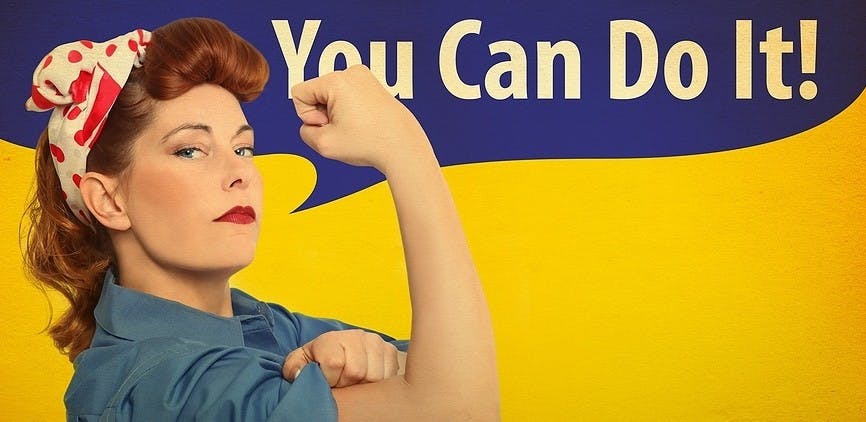A little more than a year ago, as March began, the topic of women and their progress and their many accomplishments was everywhere. Employers around the country, eager to showcase their own (often-genuine) diversity creds, were just starting to host panels and book groups, mount exhibitions, and post articles honoring women in history or even women within their own organizations.
Little did they know that 2020 would turn out to be the year women’s history got set back about five decades.
Admittedly, things aren’t as bad as they were in 1970. Women today are able to get a mortgage, get and keep a job while pregnant, and quite literally wear the pants in the family. I will confess to having been around then, although still a kid; in retrospect the things I took for granted about what it meant to be an adult woman astound me.
Nonetheless, by any measure, 2020 was a setback for women’s roles and women’s careers. By last September, U.S. women, who comprised 46% of the pre-pandemic workforce, had lost 54% of all jobs. In that month alone, four times as many women as men dropped out of the labor force. In December, every single one of the 140,000 lost jobs belonged to women. This despite the fact that women work disproportionately in the kind of frontline jobs — from nursing and caregiving to grocery check-out — that have been deemed essential during this time.
Even women who have not, officially, dropped out of the workforce have tended to scale back. Not included in the job-loss statistics are the women who are reducing their hours, turning down (or being turned down for) promotions, or foregoing new career-enhancing job opportunities.
The reasons for all this have been much discussed. Men may be doing more childcare and housework than they were 50 years ago, but they still are doing way less than women. And apparently as these responsibilities have increased — with children now being Zoom-schooled, housework expanding to accommodate multiple people under the same roof 24-hours a day, and a general upheaval in our daily habits and routines — it’s women who have taken on the bulk of added work. Meanwhile, employers generally are doing nothing about this.
One of the things that I find most disheartening about all this is what it reveals about the state of women’s equality in the first place. It’s as if all our progress over the past several decades has been built on a poorly designed and crack-filled scaffolding. Covid-19 has knocked down the superficial façade to reveal those cracks — even as the scaffolding collapses under its weight.
Since we will need to build back when this is all over, it would be wise to identify where those cracks were, and do what we can to avoid them next time. Here are just a few of the things we ought to be considering:
- We have FMLA, which means that no one can be fired just because they need time off for caregiving. But FMLA doesn’t apply to nearly half the population — that is, the millions of people who work for companies with fewer than 50 employers, or have worked with their employers for under a year, or who are self-employed. Even more significantly, FMLA doesn’t guarantee paid leave, which means many employees can’t afford to use it anyway.
- We give lip service to any number of flexible work options, but too many employers either don’t offer them at all or offer them with such rigidity that they provide no real flexibility at all. True flexibility — the ability to have control over where and how the work gets done — is inexcusably rare. As is the ability to choose to work part-time without losing all benefits, or stepping off a career path altogether.
- We have corporate parental leave policies, but few are truly gender-neutral. Even for those select few companies that do offer gender-neutral leave, how many go out of their way to ensure men feel as comfortable as women taking leave? The ability for dads to take a paid leave does not just affect the few months of new parenthood; it sets the stage for their relationships as fathers and as partners, and it has ramifications for a couple’s division of labor for years to come.
- We undoubtedly have more options for child care than in 1970, when my own elementary school sent everyone home for an hour each day, blithely assuming that our moms would be there to serve us lunch (an incorrect assumption in my case). But even with many more options today, most families are left on their own to find and choose good care, and it is prohibitively expensive for far too many.
- We have gender pay-equity laws on the books, but we still haven’t figured out how to pay women as well as men. Job candidates are still asked about their salary history, work traditionally done by women is still undervalued, there are still old-boy networks, and there is still outright discrimination — to name just some of the many reasons for the persistent inequities.
- We have female CEOs and female political leaders and female Nobel prize winners, but we still haven’t stopped asking them how they manage their work-family balance. And we haven’t stopped judging their haircuts or their outfits or the tone of their voice.
These are a few of the cracks in the scaffolding that had been supporting women’s slow but steady advancement toward equality in the United States over the past few decades. No doubt there are others as well. I certainly don’t look upon what has happened to women in the last year as any sort of a blessing — but since we have landed where we are, let’s make the most of it and see how we can build back stronger.
